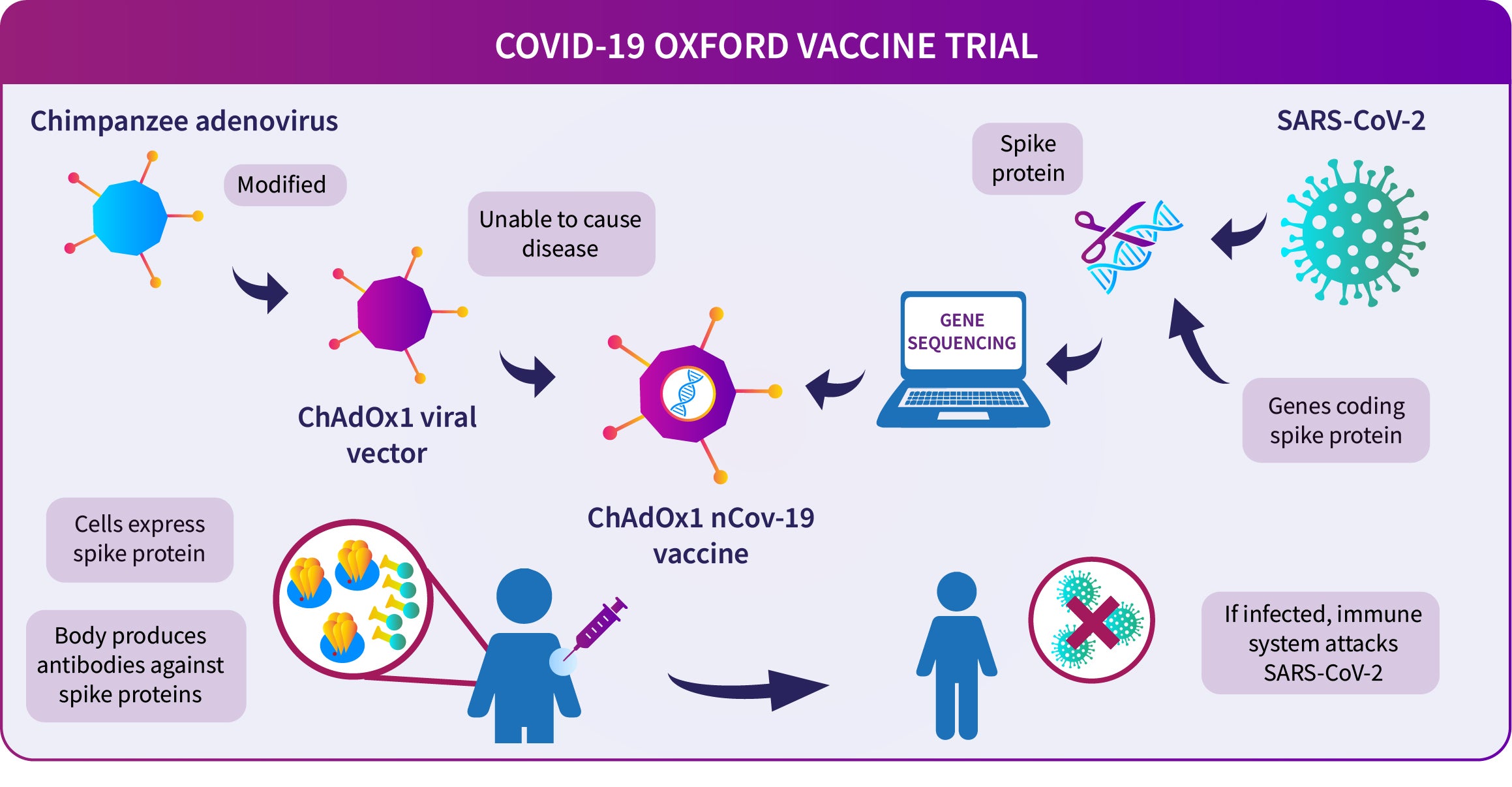How the Oxford COVID-19 vaccine works

A diagram showing how the Oxford COVID-19 vaccine works. A chimpanzee adenovirus is used in the ChAdOx1 viral vector, engineered to match the SARS-CoV-2 spike protein.
The University of Oxford vaccine is delivered via a chimpanzee virus, called the vaccine vector. The vector contains the genetic code of the protein spikes found on the coronavirus and triggers a strong immune response in the human body.
The ChAdOx1 vaccine is a chimpanzee adenovirus vaccine vector. This is a harmless, weakened adenovirus that usually causes the common cold in chimpanzees.
ChAdOx1 was chosen as the most suitable vaccine technology for a SARS-CoV-2 vaccine as
- it has been shown to generate a strong immune response from one dose in other vaccines.
- It has been genetically changed so that it is impossible for it to grow in humans.
- This also makes it safer to give to children, the elderly and anyone with a pre-existing condition such as diabetes.
- Chimpanzee adenoviral vectors are a very well-studied vaccine type, having been used safely in thousands of subjects.
Coronaviruses have club-shaped spikes on their outer coats, which form a corona – Latin for crown – on the virus surface. Immune responses from other coronavirus studies suggest that these spikes are a good target for a vaccine.
The Oxford vaccine contains the genetic sequence of this surface spike protein. When the vaccine enters cells inside the body, it uses this genetic code to produce the surface spike protein of the coronavirus. This induces an immune response, priming the immune system to attack the coronavirus if it later infects the body.
Source:
https://www.research.ox.ac.uk/Article/2020-07-19-the-oxford-covid-19-vaccine




Comments
You must login to write comment